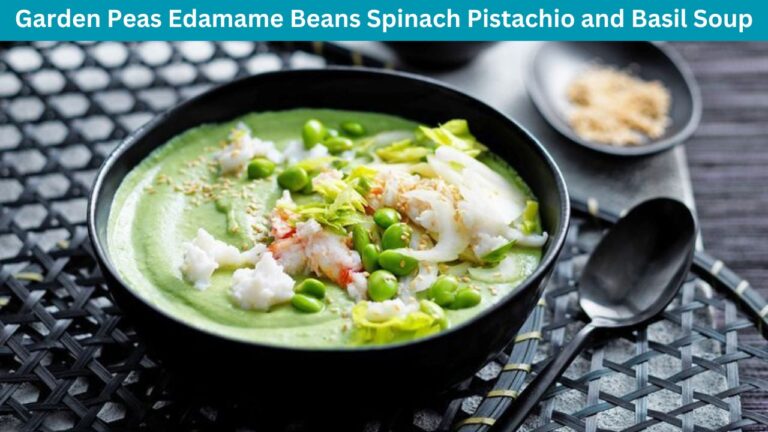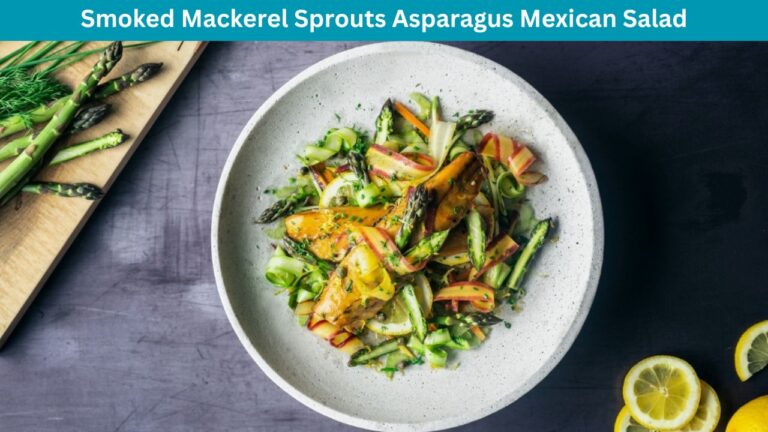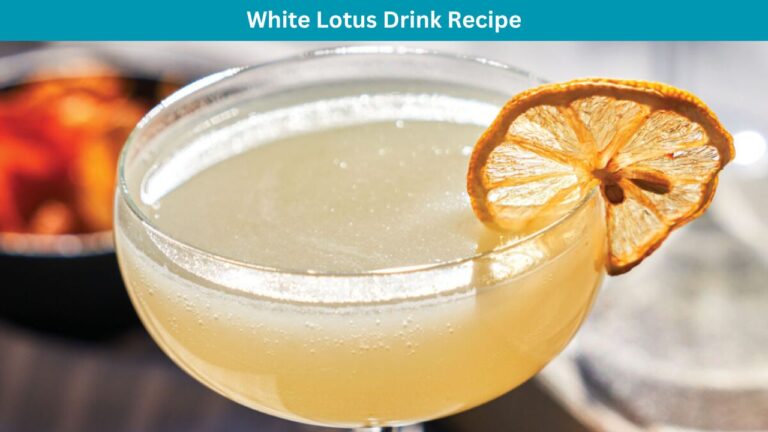Perfect Herbal Tea Recipe
Herbal Tea Recipe – Picture a comforting hug in a mug, murmuring tales of age-old knowledge and contemporary comfort. This is the enchantment of herbal tea, a realm distinct from its conventional counterpart derived from the Camellia sinensis plant.

With a myriad of flavors and potential wellness advantages, every sip of herbal tea offers a distinctive expedition for your senses. However, crafting the flawless cup surpasses the simple act of steeping leaves in boiling water; it is an artistic expression, yearning to be discovered.
History & Origin:
For thousands of years, humanity has had a deep affection for herbal tea, surrounded by stories and folklore. Ancient tales from China recount how Emperor Shennong stumbled upon tea in 2737 BCE, as leaves gracefully floated into his boiling water.
The ancient Egyptians held peppermint dear for its soothing effects on digestion, while the Romans embraced rosemary for its invigorating scent. As time progressed, European monks dedicated themselves to cultivating aromatic herbs in their monasteries, laying the foundation for Western herbal practices.
Presently, herbal tea knows no boundaries, finding its place in homes and cafes across the globe, a testament to its enduring charm.

My Herbal Tea Recipe Story:
Do you recall that initial taste of chamomile tea, soothing your nerves after a tiring day? Or the refreshing burst of ginger tea that banished the winter gloom?
Herbal tea is more than just a drink; it holds the potential for a personal narrative. You may yearn for the cozy embrace of cinnamon on a brisk autumn day or the soothing solace of lemongrass on a summer afternoon. Perhaps you long for a bespoke blend that mirrors your mood and preferences.
Whatever your inclination, there exists an ideal cup of tea, infused with your distinct essence, awaiting your discovery.
Ingredients:
The essence of your ideal beverage resides in the components. Choose organic, non-GMO herbs and flowers to enhance both the flavor and the health advantages. The quality of the ingredients is crucial, therefore it is advisable to acquire them from trustworthy suppliers renowned for their recent harvests.
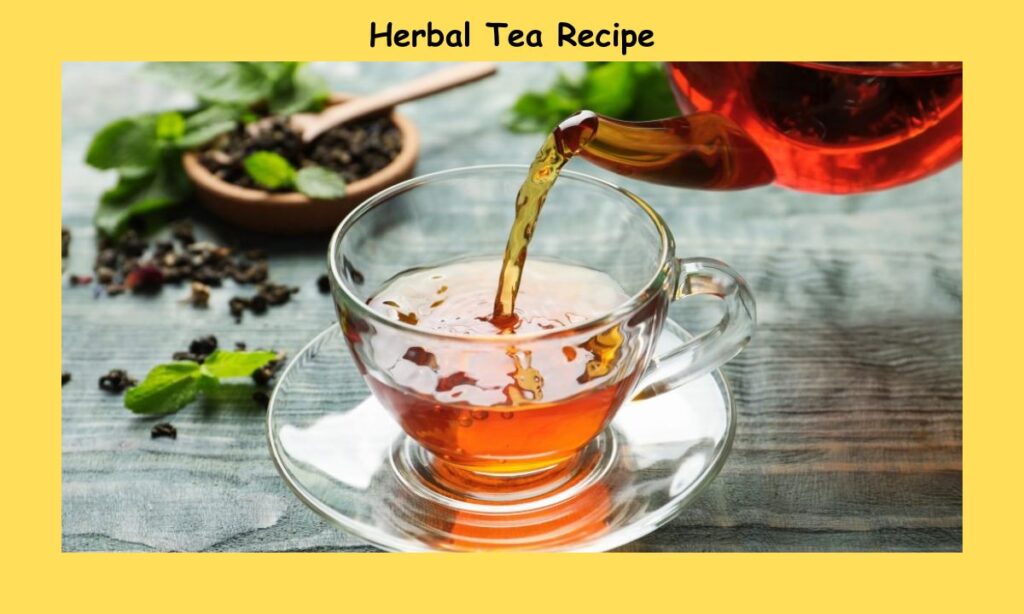
Loose-leaf teas are the epitome of excellence, as they provide larger, intact pieces that result in a more flavorful and aromatic experience compared to tea bags. Here is a list of essential items for your pantry:
- Calming: Chamomile, lavender, valerian root, lemon balm
- Invigorating: Peppermint, ginger, lemongrass, dandelion root
- Warming: Cinnamon, cloves, cardamom, fennel seed
- Fruity: Hibiscus, rosehip, raspberry leaf, apple slices
- Others: Echinacea (immune support), elderberry (antioxidant), nettle (detoxification)
Equipment:
In addition to the necessary ingredients, there are several tools that you will require to create your culinary masterpiece:
- Kettle: It is preferable to have a kettle with temperature control capabilities to ensure that the water temperature is precise.
- Teapot or mug: While infusers are not mandatory for loose-leaf teas, using clear glassware allows you to appreciate the beautiful hues of the tea.
- Strainer: If your teapot or mug does not have an infuser, a strainer is necessary for loose-leaf teas.
- Timer: A timer is essential to achieve accurate steeping times for your tea.
- Optional sweeteners: Honey, agave, or natural sweeteners can be added to enhance the flavors of your tea without overpowering them.
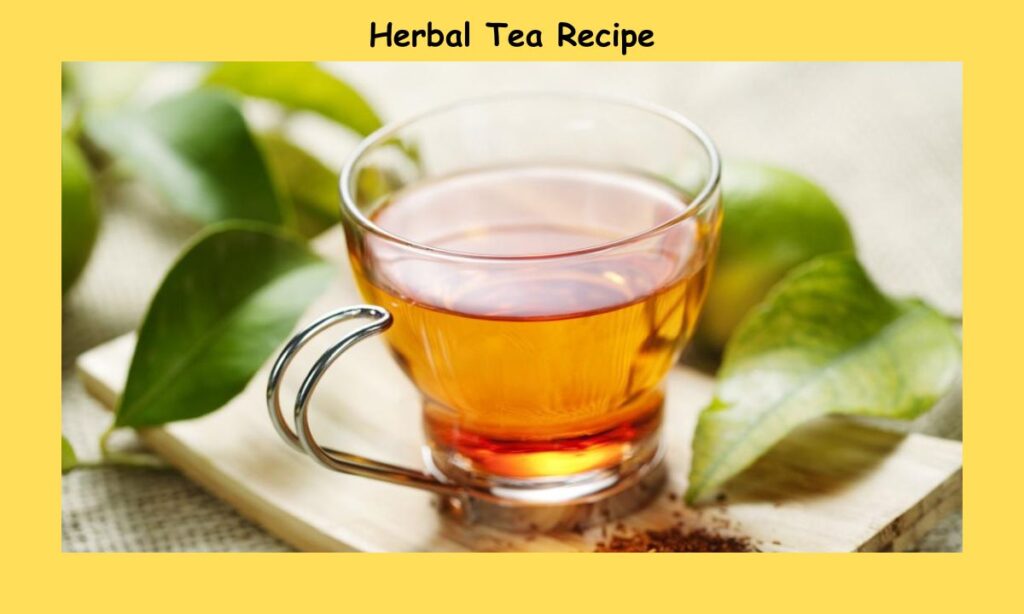
Preparation:
- Heat the water: While most herbal teas thrive with boiling water, it is important to note that delicate herbs such as lavender prefer cooler temperatures, around 180°F. To determine the ideal temperature, refer to the instructions provided with your chosen blend.
- Measure and add ingredients: For each cup of tea, use 1-2 teaspoons of loose-leaf tea or 1 tea bag. If desired, you can also consider adding additional ingredients like fruits, spices, or honey to customize the flavor according to your preference.
- Steep it right: Patience is crucial during this step. Unlike traditional teas, herbal infusions typically require longer steeping times, ranging from 5 to 10 minutes, depending on the specific blend. It is recommended to experiment and find the perfect balance where the flavor blossoms without becoming bitter.
- Strain and enjoy: Carefully pour your brewed tea into a preheated mug or teapot. If you used loose leaves, make sure to strain them before serving. Finally, take a moment to savor the delightful experience of enjoying your freshly brewed herbal tea.
Nutrition Information:
The nutritional properties of each herb are distinct, although they are not a miraculous solution. Chamomile is known for its ability to induce relaxation, peppermint aids in digestion, and ginger combats inflammation.
Delve into the extensive range of health benefits provided by various herbs, but always seek advice from a healthcare professional before using them for specific medical issues.
You May Also Like : Easy Crack Sweet Potato Bar Recipe
Tips for Maximizing Flavor and Freshness:
- Preserve herbs effectively: Safeguard the freshness and flavor of your herbs by storing them in airtight containers, away from both light and heat.
- Unleash your creativity with blends: Craft your unique and distinctive tea by skillfully combining various herbs, taking into account their individual flavors and properties.
- Embrace the seasons: Emphasize the abundance of each season by incorporating fresh fruits and herbs into your blends, allowing you to savor the unique flavors they offer.
- Enhance flavors subtly: When adding sweeteners, opt for natural options and use them sparingly to complement and enhance the flavors of your tea without overpowering them.
- Chill out with iced tea: Beat the heat on scorching days by indulging in the refreshing delight of chilled tea served over ice.
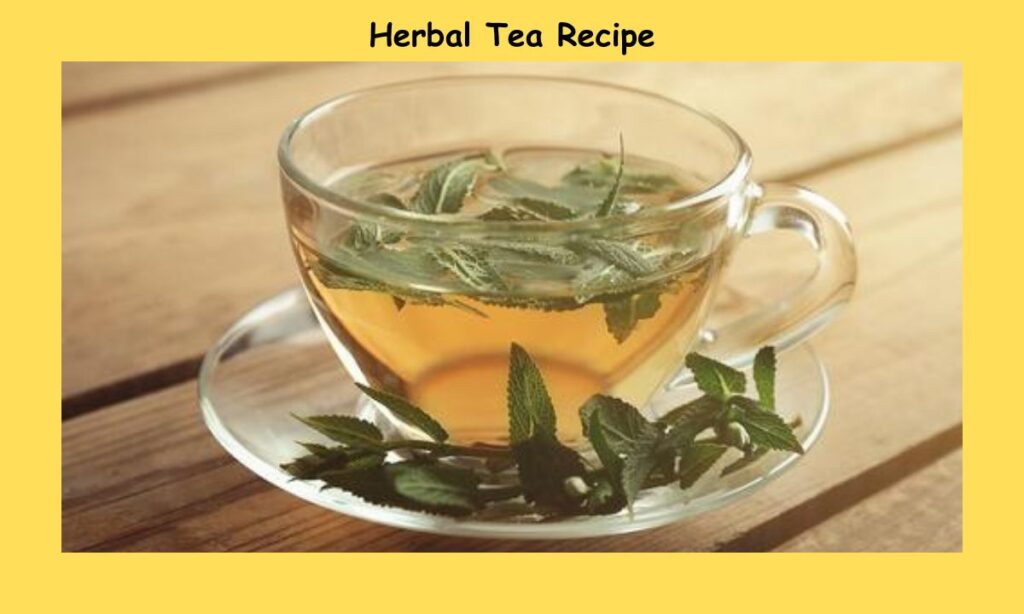
Variations:
The realm of herbal tea is boundlessly varied. Delve into these assortments to expand your tea horizons:
- Black tea infusions: Fuse black tea with ginger, cinnamon, and citrus for a timeless chai encounter.
- Rooibos infusions: Naturally devoid of caffeine, rooibos presents a distinct earthy taste, ideal for merging with berries, vanilla, or nuts.
- Herbal lattes: Combine your preferred herbal tea with steamed milk or non-dairy alternatives for a velvety and soothing indulgence.
- Effervescent teas: Infuse a sparkling twist by blending your chilled herbal tea with sparkling water, creating a revitalizing summer beverage.
Serving Suggestions:
Presentation enhances the overall experience. Here are a few suggestions:
- Preheat your mug: Allow the warmth to envelop your hands while you eagerly await your ideal cup.
- Embrace transparency: Choose clear glassware to display the vibrant colors of your tea.
- Garnish with sophistication: Incorporate a sprig of fresh herbs, a citrus slice, or edible flowers to add visual delight.
- Explore your creativity: Serve your tea in teacups, mason jars, or even teapots to create a charming presentation.
FAQs – Herbal Tea Recipe
Q1: Does loose-leaf tea really make a difference?
A: Absolutely! Loose-leaf teas provide a greater quantity of intact herbs, enabling a more complete infusion of flavor and essential oils. This leads to a more indulgent and intricate tea experience when compared to tea bags.
Q2: How long should I steep my tea?
A: The key to success lies in patience! In contrast to traditional teas, herbal infusions usually demand longer steeping periods, typically ranging from 5 to 10 minutes. It is advisable to conduct experiments to discover the optimal duration where the flavors blossom without becoming bitter.
Q3: Can I add sweeteners to my tea?
A: Of course! Natural sweeteners such as honey, agave, or maple syrup can delicately enhance the flavors of your herbs. It’s important to remember that moderation is crucial, as a small amount can have a significant impact. If you prefer vegan alternatives, stevia or coconut sugar are both fantastic options.
Q4: Are there any health benefits to herbal tea?
A: Yes, each herb has its own distinct properties, such as chamomile for relaxation, peppermint for digestion, and ginger for reducing inflammation. But it is advisable to seek guidance from a healthcare professional before incorporating them into your routine for specific health issues.
Q5: Is herbal tea safe for everyone?
A: It is of utmost importance to exercise caution and be aware of potential interactions with medications or allergies, despite the general safety of herbal teas.
Q6: Can I reuse brewed herbal tea?
A: Indeed, from a technical standpoint, reheating tea is possible. However, it is important to note that the taste and health advantages may be compromised in the process. For the most satisfying tea-drinking experience, it is recommended to savor your tea when it is freshly brewed.
Q7: Can I create my own herbal tea blends?
A: Absolutely! By exploring various herbs and adhering to proper blending protocols, one can discover thrilling customized concoctions. It is advisable to study the characteristics of each herb to avoid any potential interactions, and begin with small amounts until achieving the ideal blend.
Q8: Does herbal tea have caffeine?
A: Herbal teas are predominantly free from caffeine. However, certain herbs such as yerba mate and guayusa do contain caffeine, and it is possible for manufacturers to incorporate these herbs into herbal tea blends. To steer clear of caffeine, it is advisable to carefully examine the ingredient labels and ensure that caffeine-containing herbs are not present.
Conclusion: Crafting the ideal infusion of herbal tea is an expedition of self-exploration, an opportunity to express your artistic flair, and a practice of nurturing oneself.
Throughout the process, starting from handpicking premium ingredients to exploring diverse flavors and artistic presentations, you fashion a moment of solace that caters to your individual preferences.
Therefore, embrace this voyage, allowing the wisdom of the past to influence your choices, and infuse your cup with a touch of your essence. Always remember, the pursuit of perfection in a cup of tea is not bound by strict regulations; rather, it entails discovering your own harmonious blend of comfort, taste, and delight, one sip at a time.
